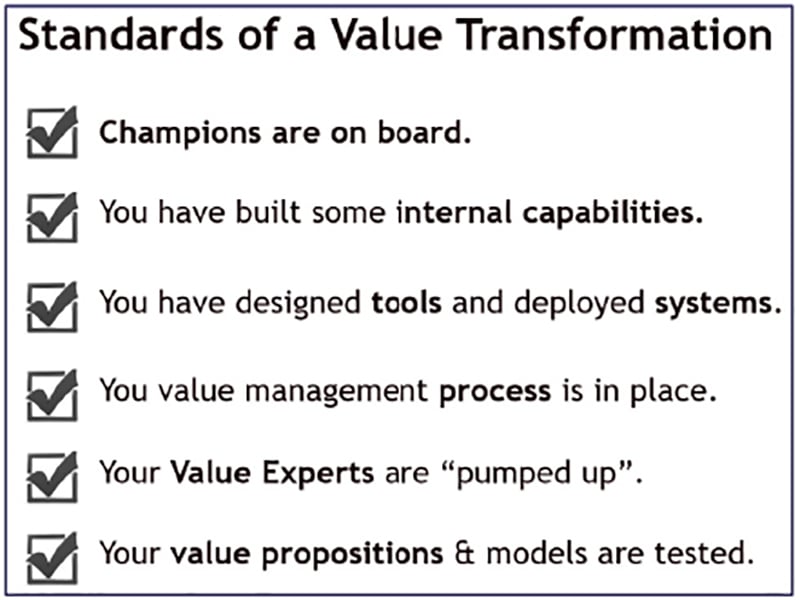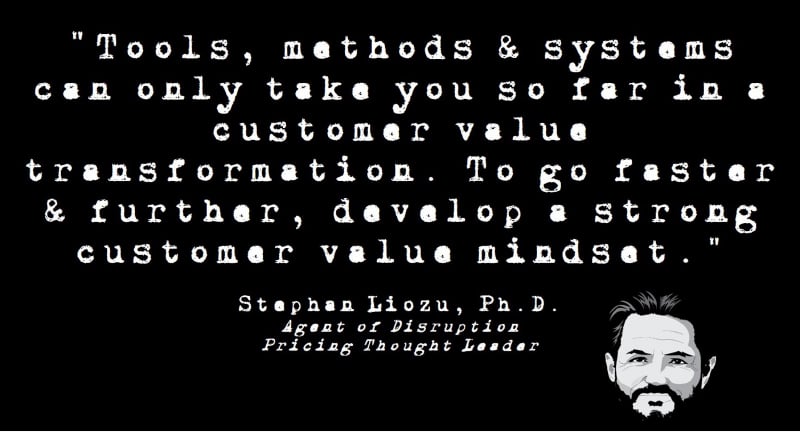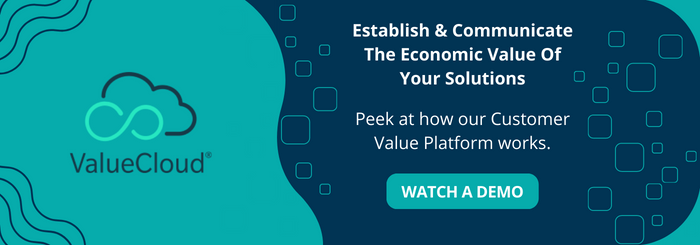The Value Transformation Journey

Transformations are hard. They take a while and have the potential to challenge the fabric of any organization. When you transform, you go deep into the culture, the organization's DNA, and the ways of working to achieve irreversible change. That is the ultimate goal.

So, transformations can be really challenging for individuals and teams. Couple that with the topic of customer value management (CVM) and you have yourself a challenge. The CVM process adds complexity if you consider the following points:
- CVM is a team sport, and you need to move all the relevant functions at once with different intensity at potentially different paces.
- CVM requires collective intelligence and system thinking. There is no one expert in CVM and the real value lies in the collective experience and intuition of teams. The system moves together, and any change from one side can affect the other!
- The concept of customer value is known to some people, but foreign to others; therefore, you need to bring everyone on board with ideas, language, perceptions, and methods.
- Customer value touches tangible and intangible organizational dimensions and assets. Understanding value requires a deep understanding of internal and external dynamics.
- Customer value is also distributed along long supply value chain and internally among various stakeholders.
I have found that subject very intriguing and have been lucky to conduct several large-scale value transformations. They are different from pricing or commercial transformations. The choice of words is essential. A transformation is also different from a strategic initiative, a corporate program, or a strategic project. When companies embark on customer value transformations, I see them starting strong. The first 18 to 24 months are quite exciting and invigorating. Things are being deployed right and left and the energy level is high. They traditionally focus on the following activities:
- Put a CVM team in place led by a Vice President or a Director of Customer Value. They hire value-related staff like Value Engineers, Value Consultants, and Business Value Analysts.
- Develop a roadmap and a process to manage the CVM process holistically.
- Develop and deploy methods and tools to conduct business value analysis, TCO analysis, and other value modeling activities.
- Ramp up the use of value tools and documents in the selling and marketing of their offers.

At that stage, things are going well and the level of adoption of CVM activities is increasing. In any transformation though, there comes a point when things start plateauing or stagnating. This is inherent to any large-scale change management initiative. Teams reach the zone of change fatigue or the valley of despair. It is part of the change management process. At that stage, there is something missing, and the transformation slows down. It is also the time when you start thinking about the next 24 months of your value transformation and focus on the next push.
Would you like to see ValueCloud in action? Book a no-obligation demo now.
Before you do that, you must consider the following points:
- When you manage customer value, things go fast and change quickly. Customer value is dynamic, and your transformation needs to include agility and dynamism.
- At that stage of the transformation, you have reached the pioneers, the early adopters, and the early majority. Depending on your culture, you have not addressed the late majority and the laggards. This could represent 50% of your staff. That may slow you down and it might be the reason your transformation is not making progress.
- You might suffer from a lack of industrialization and automation. Your most fervent supporters might get tired of doing things manually or “on the back of an envelope.” The sellers might be too distracted from pure selling and spend too much time building business value cases.
- Although you have shown success and scaled your transformation, you have not shown yet the full impact of your transformation, and you are getting challenged by management.
Your transformation is in the zone of good attention despite a strong start. What is missing, then, when you have the process, the system, the people, and the CVM aspiration? The answer is simple. You are missing the value mindset. The mindset is the glue that ties CVM people, process, and systems together.
 Developing a strong value mindset function as a booster for your value transformation and is the fuel for the next 24 months to reach the next level of excellence. There are two critical phases requiring different change management approaches and people management strategies. Yes, you read that right! In the second phase of the value transformation, as you accelerate, we must manage people, culture, and mindset a lot more.
Developing a strong value mindset function as a booster for your value transformation and is the fuel for the next 24 months to reach the next level of excellence. There are two critical phases requiring different change management approaches and people management strategies. Yes, you read that right! In the second phase of the value transformation, as you accelerate, we must manage people, culture, and mindset a lot more.
This is the first blog in a series of three on this topic. In blog #2, I will introduce the concept of a value mindset and the 6A value mindset model. Then, in blog #3, I will go through each of the 6As and give a few recommendations on how to get started and how to ultimately succeed with a true value mindset enterprise-wide.
Bio

Dr. Stephan Liozu (www.stephanliozu.com) is the Founder of Value Innoruption Advisors (www.valueinnoruption.com), a consulting boutique specializing in industrial pricing, digital business, and value models, and value-based pricing. Stephan has 30 years of experience in the industrial and manufacturing sectors with companies like Owens Corning, Saint-Gobain, Freudenberg, and Thales. He holds a Ph.D. In Management from Case Western Reserve University, and has authored several books, including his latest book, The Industrial Subscription Economy (2022). Stephan is a strategic advisor to DecisionLink and Monetize360, as well as a senior advisor at BCG.

 ValueCloud
ValueCloud
.png?width=118&height=76&name=Rectangle%20(3).png) ValueCloud Ignite
ValueCloud Ignite
.png?width=92&height=92&name=Rectangle%20(4).png) Free Assessment
Free Assessment
.png?width=100&height=100&name=Rectangle%20(5).png) Watch a Demo
Watch a Demo
.png?width=82&height=96&name=Rectangle%20(6).png) Value Calculator
Value Calculator

.png?width=62&height=51&name=Group%2010%20(1).png) Marketing
Marketing
 Sales
Sales
 Customer Success
Customer Success
 Engage Prospects
Engage Prospects
 Win Deals Faster
Win Deals Faster
 Retain Customers
Retain Customers
.png?width=62&height=62&name=Rectangle%20(8).png) Adopt and Scale
Adopt and Scale
.png?width=54&height=54&name=Rectangle%20(9).png) Cybersecurity
Cybersecurity
 Healthcare
Healthcare
.png?width=54&height=54&name=Rectangle%20(10).png) IT & Software
IT & Software




